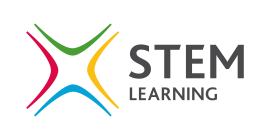- View more resources from this publisher
 STEM Learning
STEM Learning
FERA resources
These resources aim to broaden students' knowledge of careers in science whilst linking the curriculum to some of the work which scientists carry out at FERA in York. The primary resources provide a context for pollination, biodiversity and classification, and the secondary resource supports those sections of the GCSE specifications on plant disease, DNA sequencing and the use of monoclonal antibodies. All three resources provide the ideal opportunity to mention careers which students may not be aware of.
Scientists at FERA provide a range of research and analytical services to both the food and environmental industries. Examples of their work include identifying the source of pollen for honey purporting to be ‘Manuka honey’, protecting the UK against invasive species such as the Asian hornet, and the identification of pests and disease, such as the Tobacco rattle virus which can devastate potato crops. There are a range of entry routes into organisations such as FERA, including apprenticeships at aged 16 or post graduate research, offering the opportunity to travel and get out into the field, as well as working in the state of the art labs.
With 500 staff ranging from technicians to senior scientists, over 100,000 samples from over 120 countries around the world are tested each year to ensure the quality and safety of products. FERA's overarching purpose is to support and develop a sustainable food chain, a healthy natural environment, and to protect the global community from biological and chemical risks.
Each of these resources features a scientist from FERA talking about how they use some of the techniques which students will encounter in the curriculum, as well as what inspired them to follow their chosen career.
Resources
Filter
Bee detectives
This KS2 resource looks at the importance of bees as pollinators and explores some of the threats they face. The activities are based around the work of ‘real world’ scientists in organisations such as Fera.
Activities include:
Pollination roleplay...
Plant diseases: GCSE *suitable for home teaching*
The activities in this resource relate to communicable plant diseases, the use of monoclonal antibody diagnostic tests (ELISA), and the use of genome sequencing in identifying plant pathogens. The activities are based around tasks carried out in the ‘real...
Fera resources: classification
This KS2 resource supports learning about how living things can be classified into groups scientifically. Activities are based around tasks carried out in the ‘real world’ by scientists working for organisations such as Fera.
Activities include:
...





